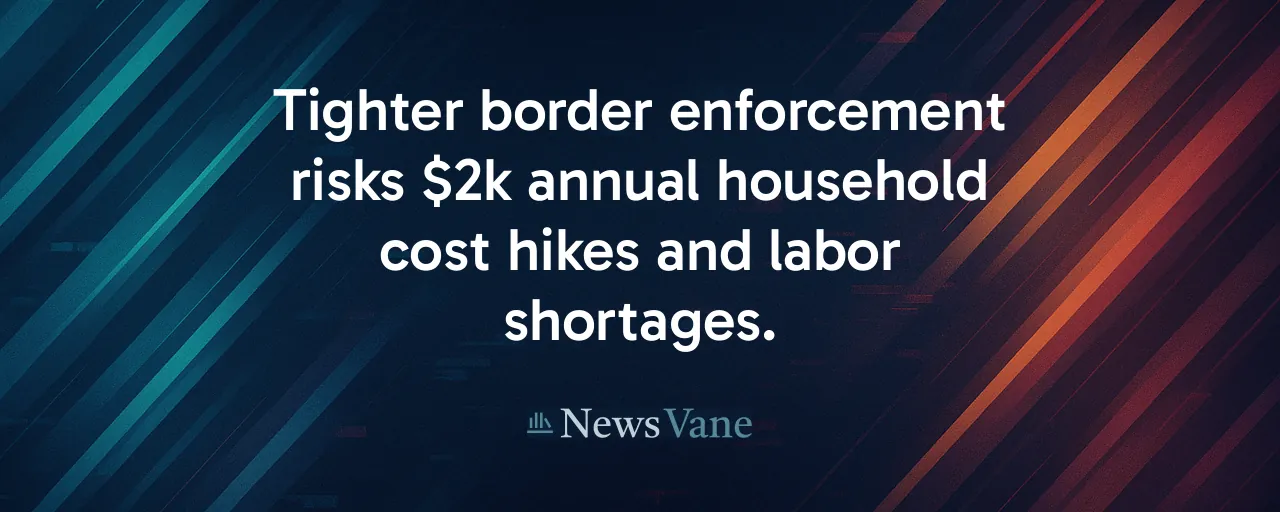A Dramatic Shift at the Border
The southern border tells a striking story. In June 2025, U.S. Border Patrol recorded just 6,070 encounters with unauthorized migrants, a 15 percent drop from the previous record low in March. One day, encounters fell to an astonishing 137. The White House hails this as proof of effective policy, pointing to intensified enforcement and a strict no-release approach. Yet, the numbers alone don't tell the full tale. Behind them lies a complex web of security measures, economic trade-offs, and human consequences.
This plunge follows a national emergency declaration in January 2025, which unleashed a wave of executive actions. Military deployments, renewed wall construction, and rapid expulsions now define the border landscape. Congress is weighing a $150 billion bill to cement these changes, including funds for more personnel and mass deportations. The debate centers on numbers and what comes next for border policy, communities, and the nation's economy.
Why the Numbers Dropped
Several factors explain the decline. Border Patrol reports show a steady downward trend since mid-2024, accelerated by new policies in 2025. About 10,000 troops now assist at the border, backed by $376 million in redirected defense funds. Mexico's increased enforcement has also slowed migrant flows. Historical data suggest seasonal dips play a role, with summer months often seeing fewer crossings due to harsh desert conditions.
Still, the no-release policy stands out. For two months, no migrants were paroled into the U.S. interior, a sharp pivot from past practices. Expedited removals have expanded, and 'gotaways', those evading detection, dropped 90 percent from last year. Customs and Border Protection data confirm a 95 percent decline in encounters since March 2024. While these steps have curbed arrivals, they've sparked questions about sustainability and cost.
Economic Ripples of Enforcement
Tighter borders carry economic weight. Oxford Economics predicts a 0.25 percent GDP reduction over time due to lower immigration. Industries like agriculture, construction, and hospitality face labor shortages, potentially driving up consumer prices. One study estimates household costs could rise by $2,000 annually if mass deportations disrupt workforces. Meanwhile, enforcement itself isn't cheap. The proposed $150 billion package would fund detention centers, personnel, and deportations, with some arguing the costs outweigh savings from reduced unauthorized labor.
Businesses and taxpayers feel the strain differently. Farmers and builders worry about unfilled jobs, while some communities welcome reallocating social-service funds. The challenge lies in balancing these pressures. Could targeted work visas or stricter employer verification meet labor needs without undermining security goals?
Human Costs in Focus
Beyond dollars, enforcement shapes lives. Public-health studies show heightened anxiety among U.S.-citizen children in mixed-status families during crackdowns. School absenteeism rises as fear keeps families from public spaces. Border communities face a heavier military presence, with some residents reporting property seizures. Humanitarian groups argue that rapid expulsions block valid asylum claims, leaving vulnerable people in limbo.
Legal scholars raise another concern: due process. Expanded expedited removals and military roles at the border test constitutional norms. Courts are reviewing whether mass expulsions align with asylum laws and international treaties. These tensions highlight a core question: can security coexist with fairness and humanity?
Learning From the Past
History offers context. The Border Patrol, formed in 1924, has seen many crackdowns. Operations like Hold the Line in 1993 and Gatekeeper in 1994 slashed crossings temporarily, but rebounds followed when migration drivers, poverty, violence, and opportunity, persisted. Recent highs in 2023 gave way to declines in 2024 under Biden-era expulsions, setting the stage for today's lows. Past efforts show deterrence works short-term, but long-term stability often hinges on addressing root causes.
Analysts point to cycles. Harsh policies cut numbers, but without broader reforms, flows resume. This pattern suggests enforcement alone is insufficient. Could investments in Central America or faster asylum processing break the cycle?
Bridging the Divide
Common ground exists. Lawmakers from both parties have floated ideas like targeting deportations to serious offenders, using technology for surveillance, and hiring more immigration judges to clear asylum backlogs. A bipartisan proposal pairs flexible expulsion rules with daily humanitarian processing quotas. Expanding legal work visas could ease labor shortages, while stricter employer checks might deter illegal hiring. These steps aim to balance security with economic and humanitarian needs.
Regional cooperation also holds promise. Supporting development in migration source countries could reduce flows over time. Such solutions require compromise, but they reflect shared goals: a secure border, a thriving economy, and respect for human dignity.
What Lies Ahead
The border's future depends on choices made now. Record-low crossings show enforcement's impact, but history warns of fragility without deeper fixes. Economic, social, and legal challenges demand a broader approach. Policymakers face a chance to move beyond short-term wins toward lasting stability.
Bipartisan ideas offer a starting point. By blending targeted enforcement, legal pathways, and regional investment, the U.S. could build a system that serves all stakeholders. The path is challenging but within reach if pragmatism prevails.
As Congress debates and courts weigh in, one thing is clear: the border represents a test of how the nation balances strength, fairness, and prosperity. The decisions made today will shape that balance for years to come.
